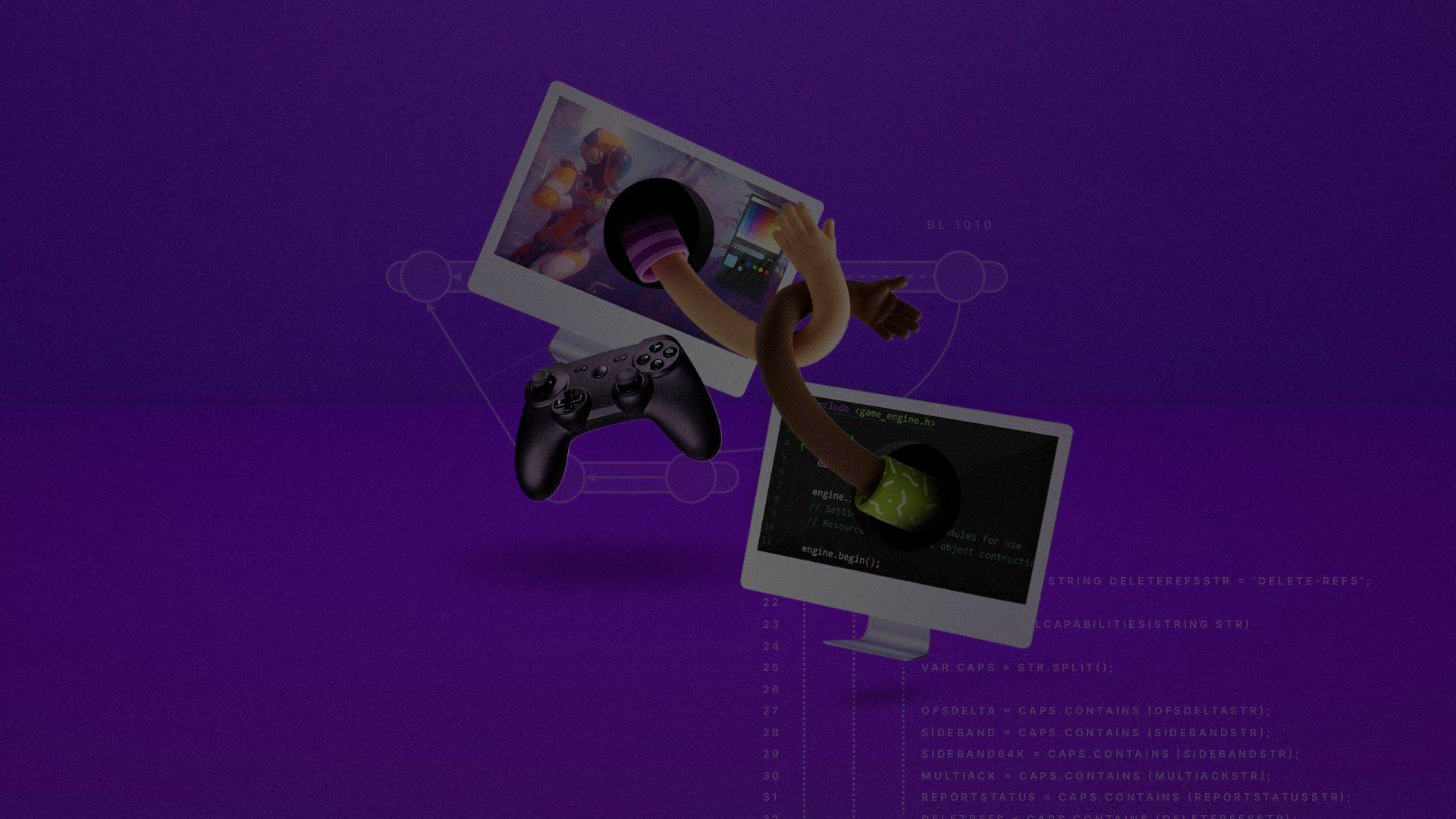
These best practices come from our free e-book, Version control and project organization best practices for game developers, created to help teams with both technical and non-technical members make smart decisions about how to set up a version control system and plan for smooth collaboration.
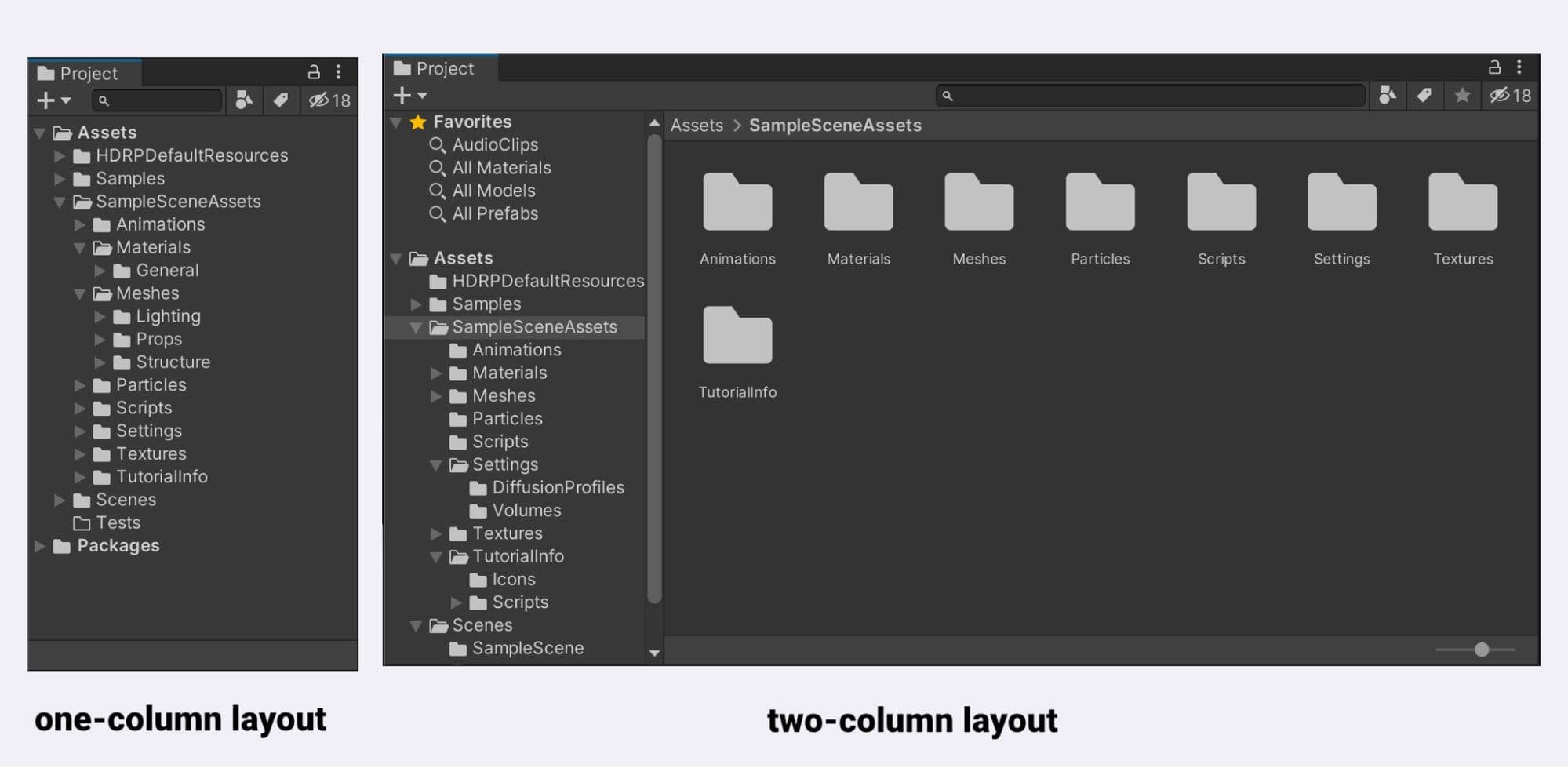
Although there is no single way to organize a Unity project, here are some key recommendations:
Note: If you find yourself modifying a third-party asset or plug-in for your project, then version control can help you get the latest update for the plug-in. Once the update is imported, you can look through the diff to see where your modifications might have been overwritten, and reimplement them.
While there is no set folder structure, the following two sections show examples of how you might set up your Unity project. These structures are both based on splitting up your project by asset type.
The Asset Types manual page describes the most common assets in greater detail. You can use the Template or Learn projects for further inspiration when organizing your folder structure. While you’re not limited to these folder names, they can provide you with a good starting point.
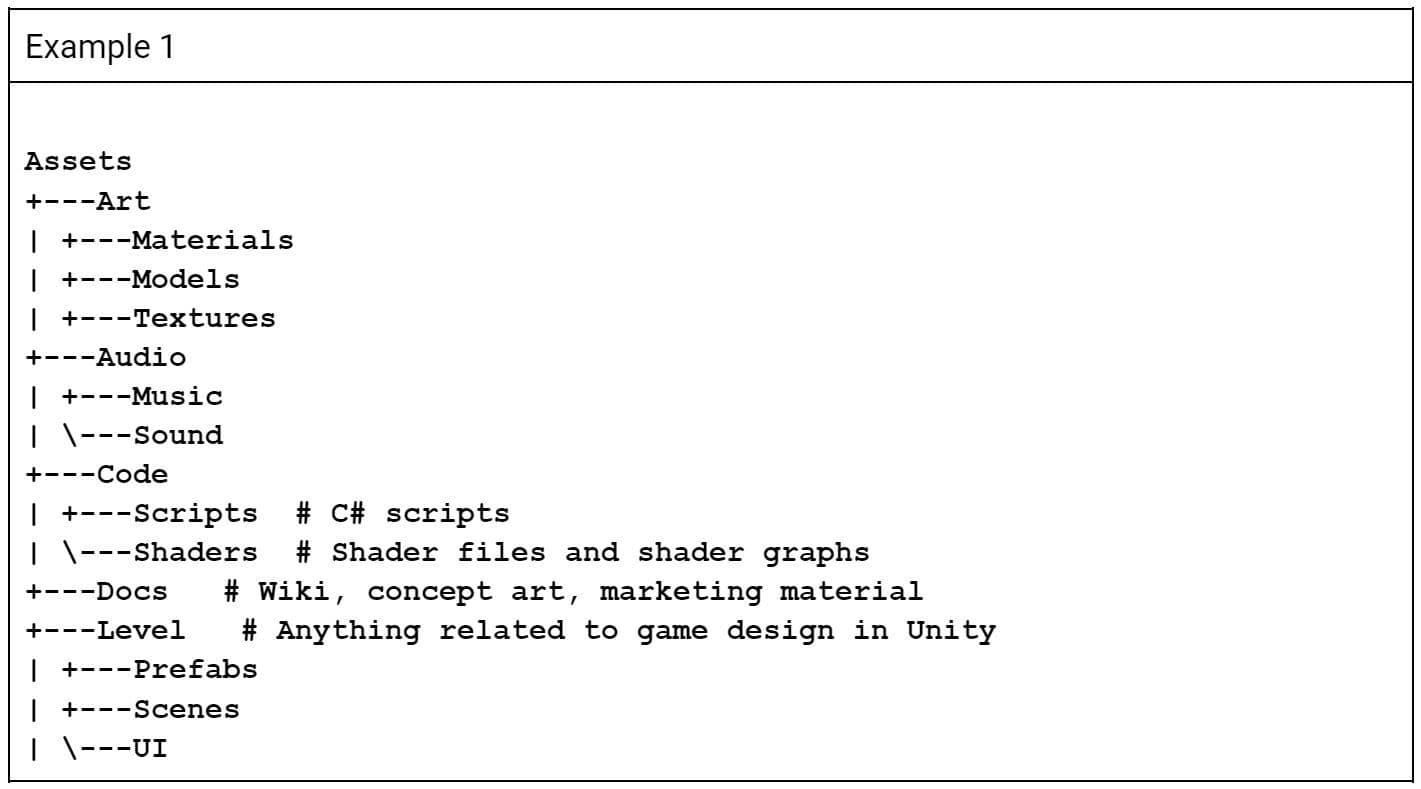
If you download one of the Template or Starter projects from the Unity Hub, you’ll notice that the subfolders are split up by asset type. Depending on the chosen template, you should see subfolders that represent several common assets.
Defining a strong project structure from the beginning can help you avoid version control issues later on. If you move assets from one folder to another, many VCS will perceive this as just deleting one file and adding another, rather than the file being moved. This loses the history of the original file.
Plastic SCM can handle file moves within Unity and preserve the history of any file that has moved. However, it’s essential that you move files in-Editor so that the .meta file moves along with the asset file.
Once you’ve decided on a folder structure for your projects, use an Editor script to reuse the template and create the same folder structure for all projects moving forward. When it’s placed in an Editor folder, the script below will create a root folder in assets matching the "PROJECT_NAME" variable. Doing this keeps your own work separate from third-party packages.
Empty folders risk creating issues in version control, so try to only create folders for what you truly need. With Git and Perforce, empty folders are ignored by default. If such project folders are set up and someone attempts to commit them, it won’t actually work until something is placed into the folder.
Note: A common workaround is to place a “.keep” file inside of an empty folder. This is enough for the folder to then be committed to the repository.
Plastic SCM can handle empty folders. Directories are treated as entities by Plastic SCM, each with their own version history attached.
This is a point to keep in mind when working in Unity. Unity generates a .meta file for every file in the project, including folders. With Git and Perforce, a user can easily commit the .meta file for an empty folder, but the folder itself won’t end up under version control. When another user gets the latest changes, there will be a .meta file for a folder that doesn’t exist on their machine, and Unity will then delete the .meta file. Plastic SCM avoids this issue altogether by including empty folders under version control.
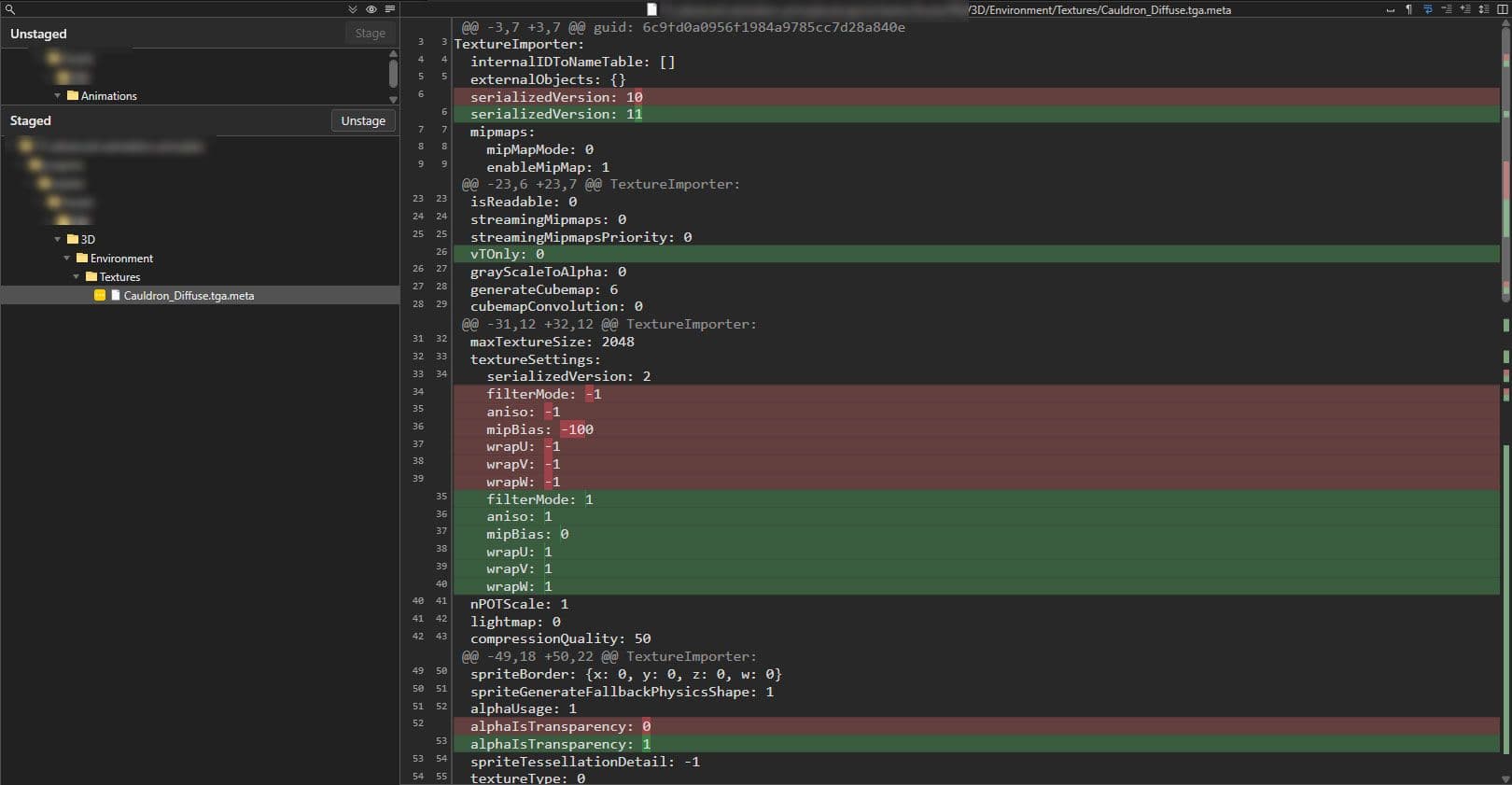
Unity generates a .meta file for every other file inside the project, and while it’s typically inadvisable to include auto-generated files in version control, the .meta file is a little bit different. Visible Meta Files mode should be turned on in the Version Control window (unless you’re using the built-in Plastic SCM or Perforce modes).
While the .meta file is auto-generated, it holds a lot of information about the file that it’s associated with. This is common for assets that have import settings, such as textures, meshes, audio clips, etc. When you change the import settings on those files, the changes are written into the .meta file (rather than the asset file). That’s why you commit the .meta files to your repository – so that everyone works with the same file settings.
Agreeing on standards doesn’t stop at the project folder structure. Setting a specific naming standard for all of your game assets can make things easier for your team when working in one another’s files.
Though there is no definitive naming standard for GameObjects, consider the table above.
Single, large Unity scenes do not lend themselves well to collaboration. Divide your levels into several, smaller scenes so that artists and designers can collaborate smoothly on a single level while minimizing the risk of conflicts.
At runtime, your project can load scenes additively using SceneManager with LoadSceneAsync passing the LoadSceneMode.Additive parameter mode.
It’s best practice to break work up into Prefabs whenever possible and leverage the power of Nested Prefabs. If you need to make changes later, you can change the Prefab rather than the scene that it’s in, to avoid conflicts with anyone else working on the scene. Prefab changes are often easier to read when doing a diff under version control.
In the case that you end up with a scene conflict, Unity also has a built-in YAML (a human readable, data-serialization language) tool used for merging scenes and Prefabs. For more information, see Smart merge in the Unity documentation.
Presets allow you to customize the default state of just about anything in your Inspector. Creating Presets lets you copy the settings of selected components or assets, save them as their own assets, then apply those same settings to other items later on.
Use Presets to enforce standards or apply reasonable defaults to new assets. They can help ensure consistent standards across your team, so that commonly overlooked settings don’t impact your project’s performance.
Click the Preset icon to the top-right of the component. To save the Preset as an asset, click Save current to… then select one of the available Presets to load a set of values.
Here are some other handy ways to use Presets:
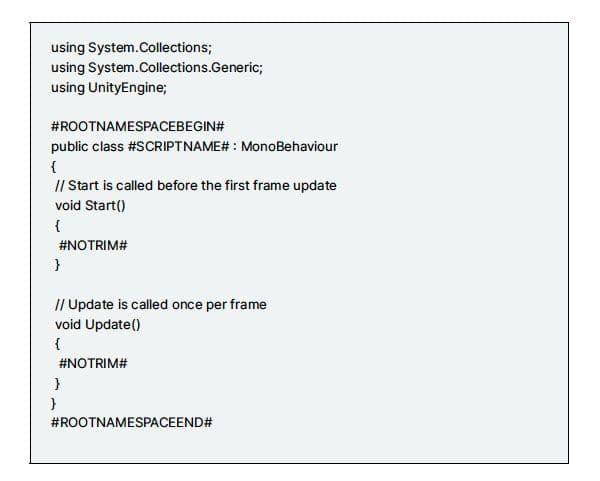
Coding standards similarly keep your team’s work consistent, which makes it easier for developers to swap between different areas of your project. Again, there are no rules set in stone here. You need to decide what’s best for your team – but once you’ve decided, make sure to stick with it.
As an example, namespaces can organize your code more precisely. They allow you to separate modules inside your project and avoid conflicts with third-party assets where class names might end up repeating.
Note: When using namespaces in your code, break up your folder structure by namespace for better organization.
A standard header is also recommended. Including a standard header in your code template helps you document the purpose of a class, the date it was created, and even who created it; essentially, all of the information that could easily get lost in the long history of a project, even when using version control.
Unity employs a script template to read from whenever you create a new MonoBehaviour in the project. Every time you create a new script or shader, Unity uses a template stored in %EDITOR_PATH%\Data\Resources\ScriptTemplates:
The default MonoBehaviour template is this one: 81-C# Script-NewBehaviourScript.cs.txt
There are also templates for shaders, other behavior scripts, and assembly definitions.
For project-specific script templates, create an Assets/ScriptTemplates folder, and copy the script templates into this folder to override the defaults.
You can also modify the default script templates directly for all projects, but make sure to back up the originals before making any changes. Each version of Unity has its own template folder, so when you update to a new version, you need to replace the templates again. The code example below shows what the original 81-C# Script-NewBehaviourScript.cs.txt file looks like.
In the example below, there are two keywords that might be helpful:
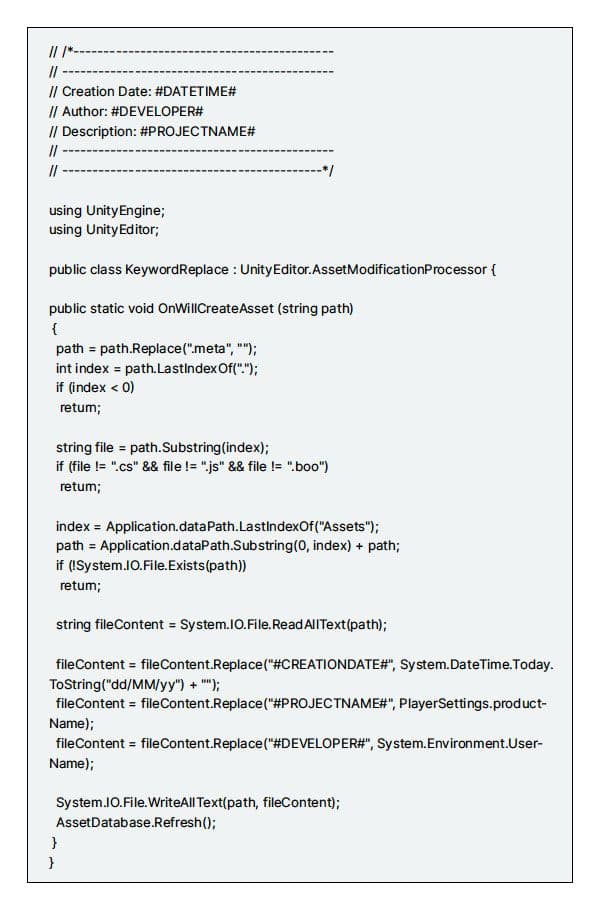
You can use your own keywords and replace them with an Editor script to implement the OnWillCreateAsset method.
Use the header in the following script example inside your script template. This way, any new script will be created with a header that shows its date, the user who created it, and the project to which it originally belonged. This is useful for reusing the code in future projects.

If you found this helpful, check out another resource on best practices for organizing your projects or our free e-book on version control.